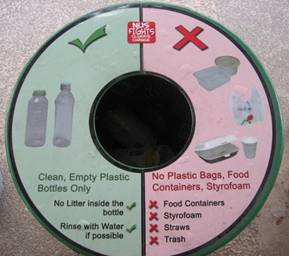Time Magazine’s list of 203 finalists for the 100 most influential people in the world is out for 2009 and thanks to Nudge, Richard Thaler and Cass Sunstein are on it. Almost making the final list is a great honor for them, but in Sunstein’s household, he’s just playing catch-up (his wife Samantha Power made the final list in 2004).
On Time’s web site, readers are able to help editors pick the influentials. Already, it is clear that the online rankings are quirky, and that’s not just because readers have ranked Thaler and Sunstein dead last as of Sunday March 29. A number of readers on Freakonomics have pointed out how awkward some of the choice architecture of the site is. Say you want to vote on who belongs on the list. Time provides a slider on a 1-100 scale that visitors can use to score influence. But you might be easily confused. Should influential people get higher or lower numbers. Seems like you’d want to give higher number to influential people; but the winner of any best/worst list always comes in at No. 1.
Reader Tom notes that Federal Reserve Chair Ben Bernanke has an average score of 5. “People are interpreting the top 100 scale to mean 1 is the highest and 100 is the lowest,” he writes. E agrees that the slider is poorly conceived. “I started by sliding toward 1 to say the person has less influence (like 1%) and toward 100 for more influence…Now I think it’s ranking that the slider indicates, not ‘influence’ as the text indicates…. So I just gave up, not understanding the paradigm.”
Initially, Time gave no guidance about how to interpret the scale. Since the site went online, Time has added a description to the scale that makes clear 100 is “most influential.”
Meanwhile, a lot of people are voting for moot, the founder of the image bulletin board 4chan.org, and the leader with a score of 75. The Korean pop star Rain (he’s Korea’s answer to Justin Timberlake) finished second on the online poll, and is currently ranked No. 3. Online polls are one good way to open up the selection process to people, but they can be vulnerable to manipulation, especially when mobilized groups participate in small, relatively unknown ones. Basically, they are a highly flawed form of choice architecture.
Comedian Stephen Colbert recently outwitted NASA by asking his viewers to write him in as part of an online poll to name a room on the international space station. One U.S. congressional member is backing Colbert’s win, telling the Chicago Tribune, “Funding for space exploration is something where getting the public’s interest is challenging, and having Colbert would bring interest to NASA’s program. Over a quarter of a million people or so came online to chime in on the naming question…It just shows what happens when you reach outside the normal circles.”
Colbert is doing pretty well again in Time’s poll, holding steady at No. 4.


